Related Research Articles

A farmer is a person engaged in agriculture, raising living organisms for food or raw materials. The term usually applies to people who do some combination of raising field crops, orchards, vineyards, poultry, or other livestock. A farmer might own the farmland or might work as a laborer on land owned by others. In most developed economies, a "farmer" is usually a farm owner (landowner), while employees of the farm are known as farm workers. However, in other older definitions a farmer was a person who promotes or improves the growth of plants, land, or crops or raises animals by labor and attention.

The Minnesota Star Tribune, formerly the Minneapolis Star Tribune, is an American daily newspaper based in Minneapolis, Minnesota. It is Minnesota's largest newspaper and the eighth-largest in the United States by circulation, and is distributed throughout the Minneapolis–Saint Paul metropolitan area, the state, and the Upper Midwest.

Charles Wayland Bryan was an American businessman and politician who served as the 20th and 23rd Governor of Nebraska, and Mayor of Lincoln, Nebraska, and was the Democratic nominee for Vice President in 1924. He was the younger brother of William Jennings Bryan.

The Franklin Avenue Bridge, officially the F.W. Cappelen Memorial Bridge, carries Franklin Avenue over the Mississippi River in Minneapolis, Minnesota. It was designed by Frederick William Cappelen, assisted by Kristoffer Olsen Oustad, both of whom were among four important Norwegian-American engineers working in the region at the time. The reinforced-concrete open-spandrel arched structure was completed in 1923. The bridge's overall length is 1054.7 feet, with a central span of 400 feet. It was added to the National Register of Historic Places in 1978 along with several other area bridges as part of a multiple-property submission. At the time of its completion, the bridge's central span was the longest concrete arch in the world.

Bernard W. Bierman was an American college football coach best known for his years as head coach of the Minnesota Golden Gophers football program. Between 1934 and 1941, his Minnesota teams won five national championships and seven Big Ten championships and had four perfect seasons. Bierman's five national championships rank him among the greatest college football coaches of all time, as only 2 coaches have won more.

Armstrong Wells Sperry was an American writer and illustrator of children's literature. His books include historical fiction and biography, often set on sailing ships, and stories of boys from Polynesia, Asia and indigenous American cultures. He is best known for his 1941 Newbery Medal-winning book Call It Courage.

Frederick Holbrook was an American farmer, businessman, and Governor of the State of Vermont. Active in politics and government, first as a Whig, and later as a Republican, he was most notable for his service as the 27th governor of Vermont from 1861 to 1863.

Francis Henry Shoemaker was a U.S. Representative from Minnesota.
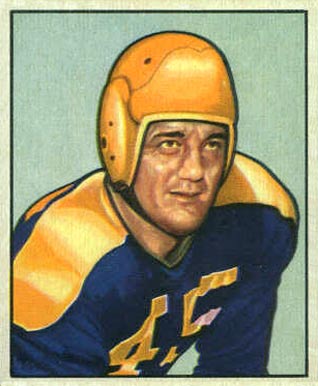
Richard Kay Wildung was an American football tackle who played college football for Minnesota (1940–1942) and professional football in the National Football League (NFL) for the Green Bay Packers. He played for back-to-back national championship teams at Minnesota and was a consensus All-American in 1941 and 1942. He was inducted into the College Football Hall of Fame in 1957.
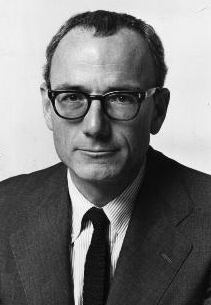
John Cowles Jr. was an American editor and publisher, son of John Cowles Sr. (1898–1983). Cowles sat on the boards of directors of the Associated Press and Columbia University's Pulitzer Prizes and had been CEO of Cowles Media Company, founded by his grandfather and until 1998 the parent of the Star Tribune.

The Femco Farms consisted of five farm properties established in Wilkin County, Minnesota, United States, in the 1920s and 1930s to experiment with livestock breeding and agricultural diversification. They were created by Frederick E. Murphy, publisher of the Minneapolis Tribune newspaper, to demonstrate improved techniques like crop rotation that could benefit farmers. The Femco Farms became famous for their influential practices, and especially for their incredibly productive dairy cows. The best preserved of the five properties, Femco Farm No. 2, was listed on the National Register of Historic Places in 1980 for its local significance in the area of agriculture.
Frederick Douglas Underwood was president of the Erie Railroad from 1901 to 1926 and a director of Wells Fargo & Company.
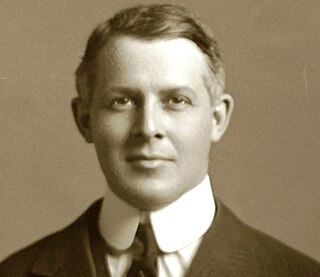
Philip George Bartelme, also known as P.G. Bartelme and sometimes spelled "Barthelme", was the second athletic director of the University of Michigan, holding the position from 1909 to 1921. Bartelme is credited with bringing the sports of basketball, hockey and swimming to varsity status at Michigan and with leading Michigan back into the Big Ten Conference after its withdrawal in 1907. The only athletic directors to serve a longer tenure at Michigan are Fielding H. Yost (1921-1940), Fritz Crisler (1941-1968), and Don Canham (1968-1988). After leaving Michigan in 1921, Bartelme spent the rest of his career in the world of professional baseball, serving as the president of the Syracuse Stars (1922-1925), the head of the St. Louis Cardinals' farm system in the 1930s, president of the Sacramento Solons (1936-1944), and a scout for the Brooklyn Dodgers. Bartelme's baseball career was closely tied to that of Branch Rickey, who Bartelme had hired as Michigan's baseball coach in 1910.

Frederick William Cappelen was a Norwegian-born architect and civil engineer who held the office of Minneapolis City Engineer.

The Tulsa Tribune was an afternoon daily newspaper published in Tulsa, Oklahoma from 1919 to 1992. Owned and run by three generations of the Jones family, the Tribune closed in 1992 after the termination of its joint operating agreement with the morning Tulsa World.

John Anderson was a Norwegian-American publisher.
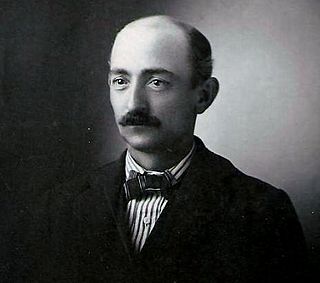
Frederick Hinde Zimmerman was an American banker, farmer, real estate entrepreneur, businessman, and hotel owner. Due to his large land holdings and expertise in farming, Zimmerman became a notable farmer, breeder, and real estate entrepreneur. Zimmerman's farm, originally purchased by his grandfather Thomas S. Hinde from the federal government in 1815, included the Grand Rapids Dam, Hanging Rock, and Buttercrust. His first experience running a business was in 1883 when he ran a grocery store in Fort Smith, Arkansas with his cousin Harry Hinde. Many of his businesses centered on his family farm, but in later years Zimmerman achieved success through his ownership and investment in mines, banks, and real estate. He also owned or invested in the Hanging Rock and Grand Rapids Dam Farm Company, the Grand Rapids Hotel Park Company, and the Wabash Bull-Frog Mines Company.
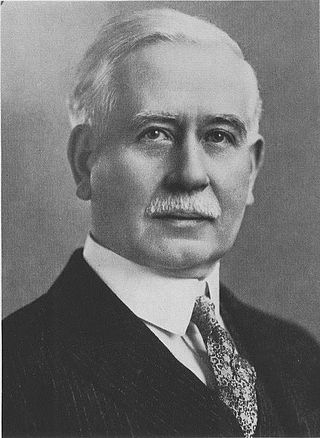
Henry Wright Marshall Sr. was an American businessperson and politician. He is known for being the founder of the Lafayette (Indiana) Journal & Courier, Speaker of the Indiana House of Representatives, and acting president of Purdue University.

William R. Baumgartner Sr. was an American football player who played at the end position. He played college football for Minnesota from 1940 to 1942 and professional football for the Baltimore Colts during the 1947 season.

William P. Mahoney was an American lawyer and politician who served in the Arizona House of Representatives from 1915 to 1916 and in the Arizona Senate from 1917 to 1918, as a member of the Democratic Party. After his tenure in the state legislature he served as the sheriff of Mohave County, Arizona.
References
- ↑ "Advertisement". Full Page Ad: Star Tribune. September 25, 1910. p. 20.
- ↑ Announcement (September 1, 1921). "Murphy Named Publisher". No. September 1, 1921. Left Margin: Star Tribune. p. 12.
- ↑ "Directors Re-Chosen by Associated Press". The Buffalo News. 23 April 1929. p. 1. Retrieved 2 September 2024.

- ↑ "F. E. Murphy Made His Intimate Knowledge Of Newspaper and Farm Work Hand in Hand". The Minneapolis Times-Tribune. February 14, 1940. p. 2.
- ↑ "Marriage of Connolly / Murphy". Minneapolis Daily Times. 18 January 1901. p. 10. Retrieved 2 September 2024.

- ↑ "F. E. Murphy, Publisher, 67". Brooklyn Eagle. 14 February 1940. p. 11. Retrieved 2 September 2024.

- ↑ "Northwest Newspaper Comment on Death of Frederick E. Murphy". Star Tribune. 15 February 1940. p. 4. Retrieved 2 September 2024.

- ↑ "Associated Press Directors Express Their Sorrow". Star Tribune. 15 February 1940. p. 4.
